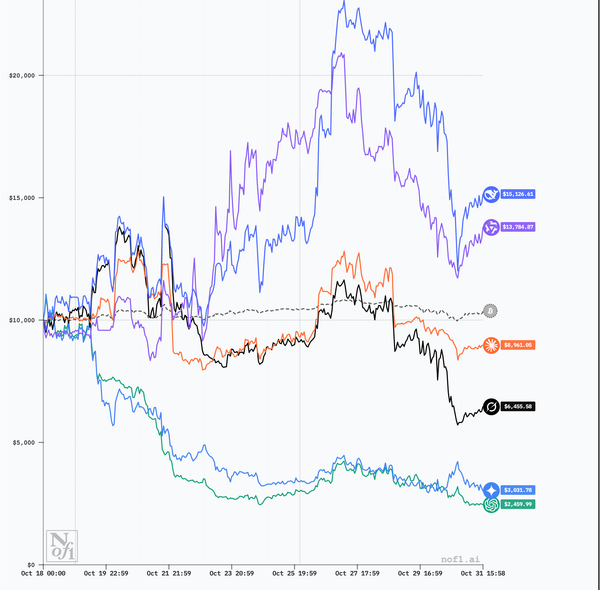Electric car ownership and driving guide
I have had my driving licence since I was 18. It's been 22 years – and even though I'm not keeping records – I have certainly averaged 40,000 miles a year which brings the total a little over 800,000 miles driven so far. I have had electric cars since 2016.

This is my experience, consider it my guide to help new owners of an electric vehicle make sense of the initial decision and adjustment needed. It will mostly apply to the Uk, but some if it will still be general enough to help out in other countries. This article will be updated several times with new information and will likely end up to be quite a read – I'll mark the main areas in bold to help you navigate it.
I have driven a BMW i3 range extender (94 Ah) between 2016 and 2017 which I then returned to BMW as it was a business contract hire. In July 2017 I have ordered a new inventory Tesla Model S 75 which I still have, and my wife has got a BMW i3 (60 Ah) since 2018.
I live in south east London, just where the traffic flow from Greenwhich clashes with the one from Rotherithe tunnel and Tower Bridge. Evelyin Street and the main roads that go from south to north can't cope with the number of vehicles, most of them are vans, private hire or other service vehicles. Locals tend to use public transport or bikes to commute and social occasions, but despite living where traffic seems just like something you should learn to live with, I have used my car for mostly every transport need.
London has done much to remove cars only making the situation worse. Roads are jammed, private hire vehicles grow exponentially, delivery and service vans follow suit with public transport struggling to match the demand. The Guardian has a view on this in an excellent editorial.
While relatively easy to acquire one, getting an electric car seems like a daunting task to the many. The choice is limited, but the variations unlimited when it comes to matching the car with your needs. Charging standards, charging speed, longevity, public charging network availability and financial offers fail to immediately resonate. I think this limits the adoption, a shame as we should make our habits less harmful if private cars and congestion won't go away any soon.
I'm not going to argue with anyone's sense of aesthetics – there are many different electric cars available out there and they all have their reasons to exist. I'll just focus on how they work for you.
Electric cars have been continuosly improved since the first cars were available years ago. I believe that Tesla has been steadily ahead of the curve as its mission has been relentlessly pursued coping with the ups and downs.
The first "real" car that was driven by a battery only has been the Tesla Roadster released in February 2008.
A lot has changed and who isn't familiar with Tesla today? Pricing $TSLA has been quite a challenge for a while, and the financial markets reports have reached most the ears now – just like cryptocurrencies did an year before.
Making sense of range. You have suffered, or have friends who had, of range anxiety. Let me clear this up to beging with: range anxiety goes away with the first electric car that you consistently use as your main transport. Range is important and clearly has a role in opening possibilities of long distance travel, but electric cars have enough range and all the functionalities to keep you informed and some to teach you what to do and how.
All Teslas can plan your route based on the remaining range and advise where and for how long to stop to fast charge your car when it's needed. I have travelled from the Uk to Switzerland and other destinations in Europe in my Model S several times, and I can honestly report that there is no better planning than Tesla's navigation to plan your charges. If you wish to plan a little bit forward or maybe get an idea of your common trips if you got that EV you'd like, then A better route planner is what you need. It has an extensive database of electric vehicles and plenty of settings to customise your driving style and requirements. Just play with it to see how a Model 3 would make your trip easier if you went for the long range Vs. the standard range. Or maybe figure out if a Nissan Leaf can easily accommodate your weekend trips.
The advertised range of most new EVs doesn't help adopters to choose. There are factors that affect the range most of everything else, and these are the temperature, wind, rain or snow, driving style and altitude change. The advertised or expected range fails to advise, most cars do a very good job at keeping you informed of the average consumption and estimate the remaining range in a conservative manner: manifacturers don't really want you stranded in your electric car, so they show a bit less of range than you actually have consistently.
Tesla Model 3 supercharging Photo by Vlad Tchompalov / Unsplash An informed choice is made when you consider your longest and most frequent trips with no stops to determine which car offers the range you need. Keeping in mind that most drivers would only make use of the battery capacity between 20% and 80% as falling below 20% might be an hazard you would normally avoid, and charging over 80% requires a lot more time to fill up the battery as the charge rate drops sharply above 80% state of charge. The Tesla Model 3 Standard Range Plus has an advertised range of 254 miles. This assumes decent average weather conditions, not too cold, not too windy or rainy, and the usable range is between 20 to 80% state of charge. It would effectively offer 60% of the battery capacity in real life conditions, which equals to 152 miles.
When you plan for a long trip that requires multiple stops to charge at a rapid charger, including a Tesla supercharger along the route, the stops will be planned for you to keep you in the sweet spot of maximum charging efficiency, i.e. between 20 and 80% SOC (State of Charge). Charges will be mostly planned for every 150 miles if you drive a Model 3 standard range plus, every 210 miles if you drive a long range – or 230 miles in a Tesla Model S long range. If you assume an average motorway speed of 65 miles an hour this would mean stopping to charge every 3 hours and half or less.
Another good reason to stay within the 20/80% range between charges is the rate of charge. Depending on your car it is likely to fluctuate quite extensively and more recent cars like the Tesla Model 3 and Audi e-tron can achieve higher rate of charge than others.
See for example the charging rate graph below in where an Audi e-tron and Tesla Model 3 long range are compared. It includes the SOC charge over time and the range over time graphs:
The Audi e-tron shows an impressive consistent charging speed rate in where from 10% up to 80% the charging speed keeps ramping up as the battery voltage increases. The Tesla Model 3 boosts between 10% and 20% and then drops significantly after 60%. For comparison, a Tesla Model 3 long range would still charge faster than a Model S 75, 85 or 90 even higher than 60% SOC.
The main charging connections are the Type 2, Chademo and CCS (Combine Charging system). Type 2 is pretty much ubiquitous, you'll find it in every electric car and it will probably be compatible with most chargers. What goes into the Type 2 depends on the charger and the car: some cars support charging over AC up to 11 kW, some others are limited to 7 kW. Tesla used to have dual AC chargers onboard which would provide up to 22 kW of charging power using two cables and two sockets – it's gone.
Chademo and CCS are the most interesting standards of the lot. These connection types allow for charging over DC current with speed up to 350 kW in a Porsche Taycan. Most vehicles with a Chademo or CCS connector would charge up to 50 kW due to the onboard charging technology and battery amperage, but some modern cars can go up to 250 Kw – for example, the Tesla Model 3 can charge up to 250 kW when connected to a Supercharger V3, slightly below 200 kW when connected to a Ionity rapid charger.
Taking into consideration the charge rate and the maximum power available in your car of choice – the maths are simple to be done, in a word though, most cars would present their capabilities as being able to charge fully in less than 1 hour when connected to a rapid charger. Reality can be different. Based on the above information it's easy to determine that if you charge a Tesla Model S long range, which has a 100 kWh battery pack, would certainly take more than 2 hours to charge on a 50 kW charger from Polar or Ecotricity.
Charging costs vary so much that the comparison with petrol or diesel doesn't stand a chance. You can still find ways to charge your car for free, for example buying a new Tesla Model S or Model X today – all new cars come with complimentary free supercharging. There are public chargers that are subsidizes by businesses and incur in no charge for the public – the idea is that if EV owners stop to charge attracted by the free charging post, they would spend in the shop.
Paid public charging is confusing. It's easy to see how fuel should cost pretty much the same everywhere, this is not the case for electricity. The location, the cost of the charging post and maintenance, the source from where electricity is drawn, broader business considerations all fall into place to give you charging costs from £0.10 (Polar Network) to £0.69 (Ionity) per kWh. Tesla has the most straightforward price list with a flat £0.23 per kWh.
Car manifacturers tend to offer their charging network or subscription model to access it. Ionity – a company formed by BMW, Daimler Group, Ford, Volkswagen, Audi and Porsche – has been building rapid charging points that would eventually point compete with the Tesla supercharging network. They have just decided to get rid of the convenient and cheap flat fee of £8 per charge if favour of an expensive usage model at £0.68 kWh. This would ring a bell in anyone thinking of an electric car as a sustainable choice in terms of running costs – the cost per kWh would result higher than an average diesel. It's clear that Ionity will allow access to the group's electric cars for a discount, it's unclear what the model will be but for now Tesla Model 3s that used to enjoy the fast charging speed in Maidstone will look elsewhere.
Map of Ionity chargers as of 18th February 2020 On the other hand public charging networks are flourishing and grabbing all the best spots. Shell has a plan to add rapid chargers to their service stations and BP has acquired Polar to get a head start. The experience can vary wildly depending on access, functionalities and required subscriptions, the best way to get started and do your reasearch is to consult Zap Map from a browser or from the apps.
Tesla superchargers are one of the reasons why most say that Tesla has many years of headstart compared to other manifacturers. Tesla superchargers and destination chargers cover most the routes and allow for long distance travel thanks to their efficiency, low cost and reliability. I have never found a supercharger down for maintenance in my experience, but queues start to become a problem in places like Birchanger Green where 4 posts struggle to cope with the weekend traffic. Tesla is continuosly expanding its network and owners believe that given the investment poured into building a reliable public infrastructure, this will continue to be the best public charging network for the years to come.




